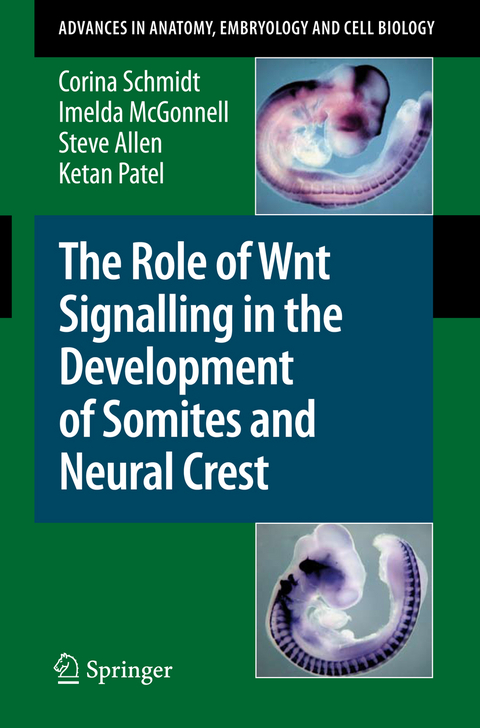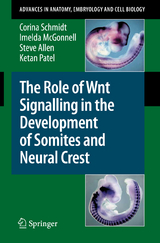The Role of Wnt Signalling in the Development of Somites and Neural Crest
Seiten
2008
|
2008
Springer Berlin (Verlag)
978-3-540-77726-7 (ISBN)
Springer Berlin (Verlag)
978-3-540-77726-7 (ISBN)
1 Introduction 1. 1 Wnts and Development The f amily of Wnt genes consists of at least 19 members in vertebrates. Wnts ha v e multiple roles during normal development and aetiology of diseases (Wodarz and Nusse 1998; Moon et al. 2002, 2004). These genes encode for glycoproteins that are released in the intercellular space, acting as intercellular mediators (Moon et al. 1997). By binding to their special receptors, the Frizzled (Fz) receptors, they are able to activate at least three different pathways: the canonical, the non-canonical and the Ca 2+ pathway (Fig. 1 ). The Wnt family has been subdivided, using functional assays, into at least two subclasses. In Xenopus , Wnt1, Wnt3a and Wnt8 are able to induce axis duplication in embryos, whereas Wnt4, Wnt5a and Wnt11 cannot (Du et al. 1995). Those Wnts that are able to induce axis duplication are thought to act canonically; those who cannot are thought to act non-canonically. In the literature, therefore, some Wnts are called canonical Wnts while others are called n- cano nical Wnts, suggesting that a special Wnt always activates the same signalling pathway. It is unlikely that the specificity dictating cellular responses resides solely in the Wnt ligands because no one has reported sequence or structural motifs in Wnts that predict their activities in these cellular and embryonic assays.
1. Introduction.- 1.1 Wnts and development.- 1.2. Somite formation.- 1.3. Induction, delamination and migration of neural crest.- 1.4. Outline of research plan.- 2. Material and methods.- 3. Results.- 3.1 Wnt6 and somitogenesis.- 3.2 The regulation of cNkd1 expression.- 3.3 Wnt6 and the neural crest.- 4. Discussion.- 5. Summary.- 7. References.- 8. Acknowledgements.- Subject index.
| Erscheint lt. Verlag | 12.6.2008 |
|---|---|
| Reihe/Serie | Advances in Anatomy, Embryology and Cell Biology |
| Zusatzinfo | X, 64 p. 15 illus. in color. |
| Verlagsort | Berlin |
| Sprache | englisch |
| Maße | 155 x 235 mm |
| Gewicht | 130 g |
| Themenwelt | Medizin / Pharmazie ► Studium |
| Naturwissenschaften ► Biologie ► Humanbiologie | |
| Schlagworte | cNkd1 expression • Development • Hardcover, Softcover / Medizin/Nichtklinische Fächer • HC/Medizin/Nichtklinische Fächer • Migration • neural crest induction • neural crest production • Regulation • somitogenesis |
| ISBN-10 | 3-540-77726-1 / 3540777261 |
| ISBN-13 | 978-3-540-77726-7 / 9783540777267 |
| Zustand | Neuware |
| Haben Sie eine Frage zum Produkt? |
Mehr entdecken
aus dem Bereich
aus dem Bereich
23 Techniken, um Stress abzubauen, Negativspiralen zu unterbrechen …
Buch | Softcover (2023)
FinanzBuch Verlag
CHF 25,20
produktiv sein ohne Stress – und mehr vom Leben haben
Buch | Softcover (2023)
dtv Verlagsgesellschaft
CHF 25,20
Wie Myrmecophile mit ihren Wirten interagieren
Buch | Softcover (2023)
Springer (Verlag)
CHF 97,95




